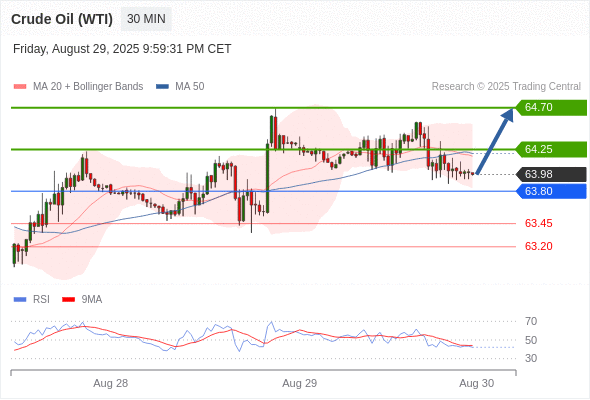WTI
USOIL63.646USD
Today
-0.52%
5 Days
+0.45%
1 Month
-8.83%
6 Months
-9.03%
Year to Date
-11.00%
1 Year
-12.86%
Key Data Points
Opening Price
63.964Previous Closing Price
63.98Indicators
The Indicators feature provides value and direction analysis for various instruments under a selection of technical indicators, together with a technical summary.
This feature includes nine of the commonly used technical indicators: MACD, RSI, KDJ, StochRSI, ATR, CCI, WR, TRIX and MA. You may also adjust the timeframe depending on your needs.
Please note that technical analysis is only part of investment reference, and there is no absolute standard for using numerical values to assess direction. The results are for reference only, and we are not responsible for the accuracy of the indicator calculations and summaries.
WTI Trading Strategy

Trading Strategy
Long positions above 63.80 with targets at 64.25 & 64.70 in extension.
Alternative scenario
below 63.80 look for further downside with 63.45 & 63.20 as targets.
Comment
long positions above 63.80 with targets at 64.25 & 64.70 in extension.

